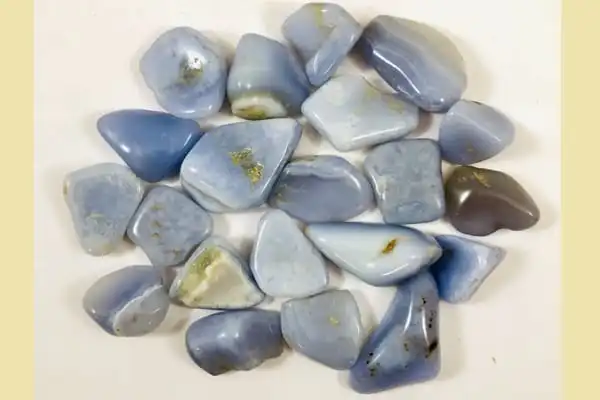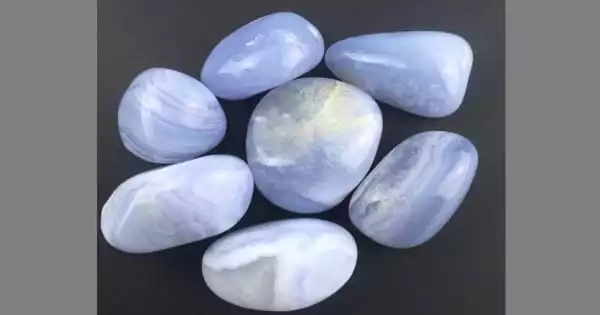Chalcedony is cryptocrystalline silica made up of very fine intergrowths of quartz and moganite. It is available in a variety of colors, including white, pink, gray-blue, and red. Both are silica minerals, however, quartz has a trigonal crystal structure, whereas moganite is monoclinic. It is a common gemstone that may be found all over the world. It appears in a variety of sizes and is sometimes banded; it is commonly seen as a geode or little tumbled stone. The conventional chemical structure of chalcedony (based on the chemical structure of quartz) is SiO2 (silicon dioxide).
The name Chalcedony is derived from the ancient Byzantine port city of Chalcedon, known today as Kadikoy in Turkey. Notable Chalcedony occurrences are in the USA, Russia, Namibia, India, New Zealand, Morocco, Mexico, Brazil, and Turkey.
General Information
- Category: Oxide minerals, quartz group
- Formula (repeating unit): Silica (silicon dioxide, SiO2)
- Crystal system: Trigonal or monoclinic
- Color: Various
- Formula mass: 60 g/mol

Properties
Chalcedony has a waxy sheen and can be translucent or semitransparent. It can take on a variety of colors, but the most frequent are white to gray, grayish-blue, or a brown tone ranging from mild to practically black. The hue of commercially available chalcedony is frequently increased by dyeing or heating.
- Cleavage: Absent
- Fracture: Uneven, splintery, conchoidal
- Mohs scale hardness: 6–7
- Luster: Waxy, vitreous, dull, greasy, silky
- Streak: White
- Diaphaneity: Translucent
- Specific gravity: 2.59–2.61
Chalcedony aligns and harmonizes the mind, body, and soul. It is a protection stone that absorbs negative vibrations and energy and allows it to evaporate so that it does not spread further.
It is a highly nurturing stone that develops and strengthens goodwill and stability among individuals. It promotes empathy and understanding, as well as bringing calming vibrations to possible regions of tension between people.
Chalcedony is a bluish, translucent gemstone that glows curiously from within, much like a clean running stream. It has a refreshing character that goes with any color, but especially with the myriad colors of blue that are currently ruling fashion.
Occurrences
The name chalcedony is derived from the Latin chalcedonies (alternatively written calchedonius) and most likely originated from the Turkish town of Chalcedon. Pliny the Elder’s Naturalis Historia uses the name as a descriptor for a translucent type of jaspis.
Chalcedony, a kind of Silica, is made up of exceedingly fine intergrowths of Quartz and Morganite. Si02 is its normal chemical structure (silicon dioxide). Chalcedony is semi-transparent to translucent with a waxy sheen and a trigonal crystal structure.
















